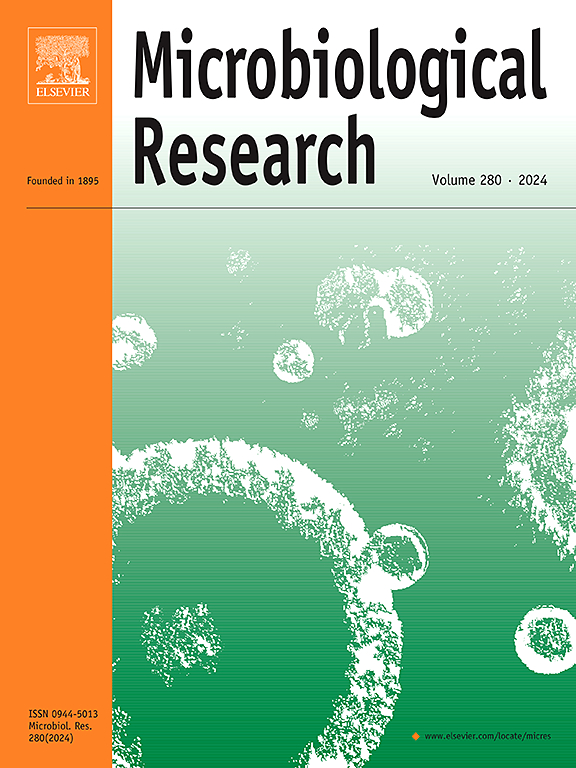Single and combinatorial gene inactivation in Aspergillus niger using selected as well as genome-wide gRNA library pools
IF 6.1
1区 生物学
Q1 MICROBIOLOGY
引用次数: 0
Abstract
Aspergillus niger is a saprotroph, a pathogen, an endophyte, a food spoiler and an important cell factory. Only a minor fraction of its genes has been experimentally characterized. We here set up a CRISPR/Cas9 mutagenesis screen for functional gene analysis using co-transformation of a pool of gene editing plasmids that are maintained under selection pressure and that each contain a gRNA. First, a pool of gRNA vectors was introduced in A. niger targeting five genes with easy selectable phenotypes. Transformants were obtained with all possible single, double, triple, quadruple and quintuple gene inactivation phenotypes. Their genotypes were confirmed using the gRNA sequences in the transforming vector as barcodes. Next, a gRNA library was introduced in A. niger targeting > 9600 genes. Gene nsdC was identified as a sporulation gene using co-transformation conditions that favored uptake of one or two gRNA construct(s) from the genome-wide vector pool. Together, CRISPR/Cas9 vectors with a (genome-wide) pool of gRNAs can be used for functional analysis of genes in A. niger with phenotypes that are the result of the inactivation of a single or multiple genes.
使用选定的和全基因组gRNA文库库对黑曲霉进行单基因和组合基因失活
黑曲霉是腐坏菌、病原体、内生菌、食物破坏者和重要的细胞工厂。它的基因中只有一小部分已被实验表征。我们在这里建立了一个CRISPR/Cas9突变筛选,用于功能基因分析,使用在选择压力下维持的一组基因编辑质粒的共转化,每个质粒都含有一个gRNA。首先,在黑曲霉中引入了一个gRNA载体池,针对5个易选择表型的基因。获得的转化子具有所有可能的单、双、三、四和五基因失活表型。利用转化载体中的gRNA序列作为条形码进行基因型鉴定。接下来,在黑曲霉中引入了一个gRNA文库,目标为>; 9600个基因。基因nsdC被鉴定为一个产孢基因,使用共转化条件,有利于从全基因组载体池中摄取一个或两个gRNA结构。总之,CRISPR/Cas9载体和(全基因组)gRNAs库可用于黑曲霉中单个或多个基因失活导致表型的基因的功能分析。
本文章由计算机程序翻译,如有差异,请以英文原文为准。
求助全文
约1分钟内获得全文
求助全文
来源期刊

Microbiological research
生物-微生物学
CiteScore
10.90
自引率
6.00%
发文量
249
审稿时长
29 days
期刊介绍:
Microbiological Research is devoted to publishing reports on prokaryotic and eukaryotic microorganisms such as yeasts, fungi, bacteria, archaea, and protozoa. Research on interactions between pathogenic microorganisms and their environment or hosts are also covered.
 求助内容:
求助内容: 应助结果提醒方式:
应助结果提醒方式:


